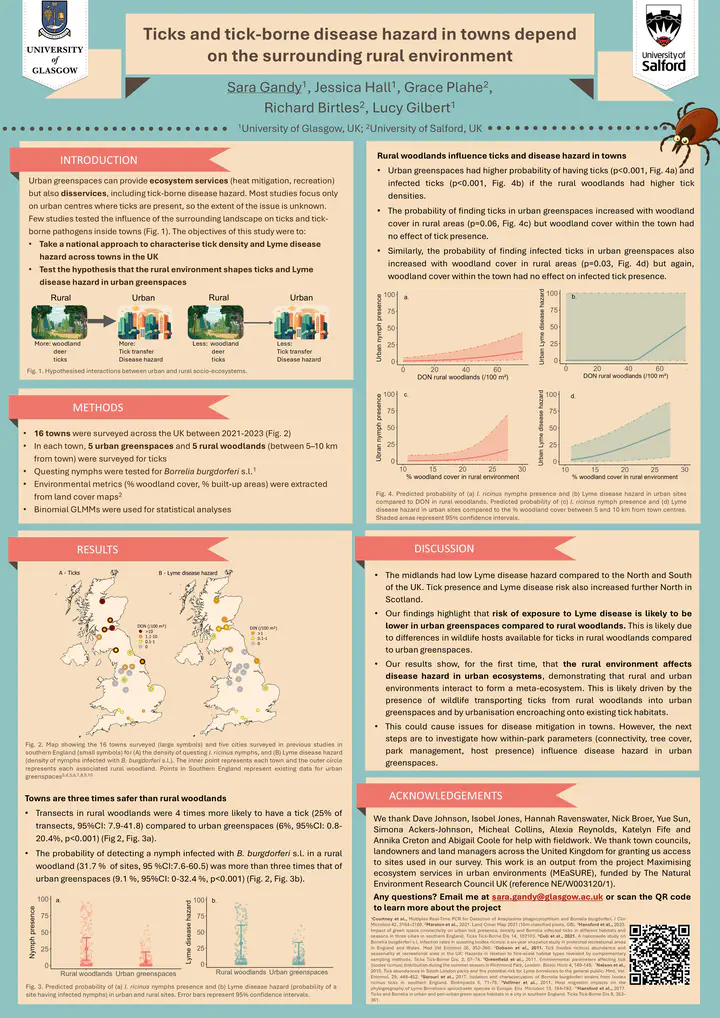Poster presentation at the ESOVE conference in October 2024

Abstract
Urban greenspaces provide ecosystem services such as climate change mitigation and recreation. However, ticks and tick-borne diseases have been reported in urban greenspace across Europe, which could present the disservice of a public health hazard. Most studies investigate only urban centres where ticks are present, so the extent of the issue across large regions is unknown. Furthermore, few studies test the influence of the surrounding landscape on tick or tick-borne pathogen hazard inside towns. The objective of this study was to take a nationwide approach to characterize tick and Lyme disease hazard in 16 towns and three cities across the United Kingdom.For each town, we surveyed questing Ixodes ricinus ticks and the Borrelia burgdorferi s.l. bacteria (causing Lyme disease) in five urban greenspaces and five sites in the surrounding rural environment. For each of the three cities, we also surveyed five suburban sites. Surveys were conducted between 2021 and 2023.We found ticks in 37.5% (6/16) towns and 75% (12/16) hinterlands, with fewest ticks across the central parts of England. The probability of ticks and Lyme disease hazard in urban greenspaces were significantly lower than in the surrounding countryside. Tick presence and Lyme disease hazard were positively correlated with the density of ticks and the percentage of woodland cover in the rural environment (between 5 and 10 km of the town centre) and negatively associated with the percentage of urban cover whilst we did not find any correlation with land cover metrics within 5 km of the town centre. These results highlight that recreating in urban greenspaces poses a lower hazard of ticks and Lyme disease than in rural woodlands and demonstrates tick presence and Lyme disease hazard in urban greenspaces are influenced by the hinterland context within which the town lies.